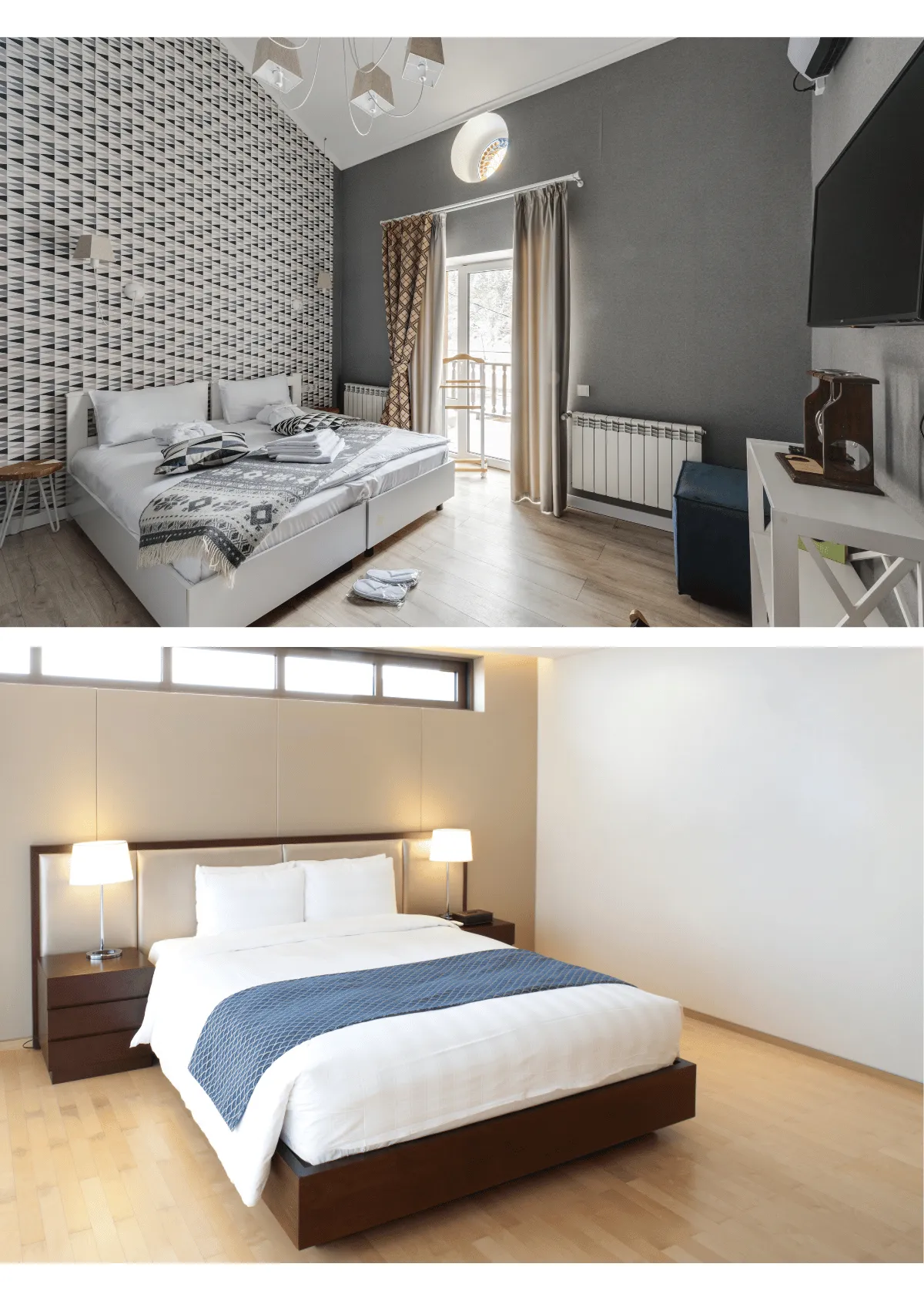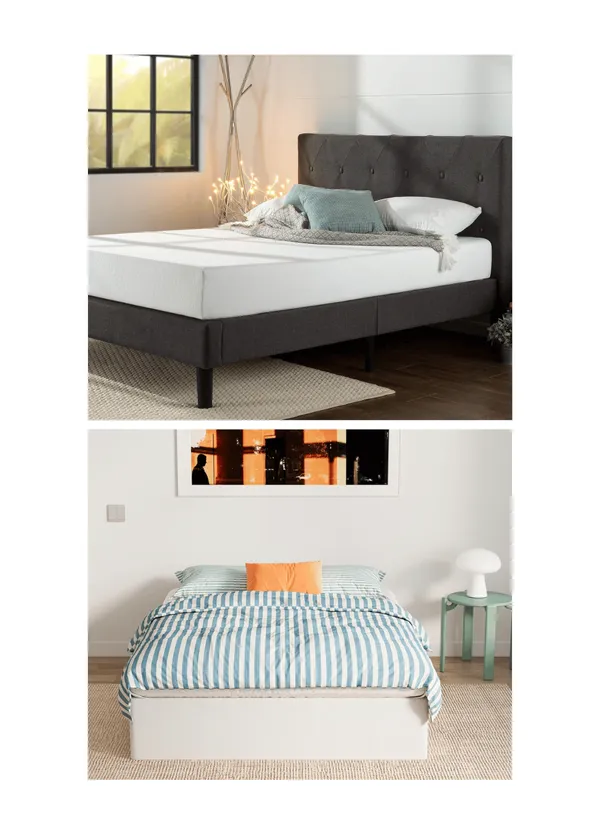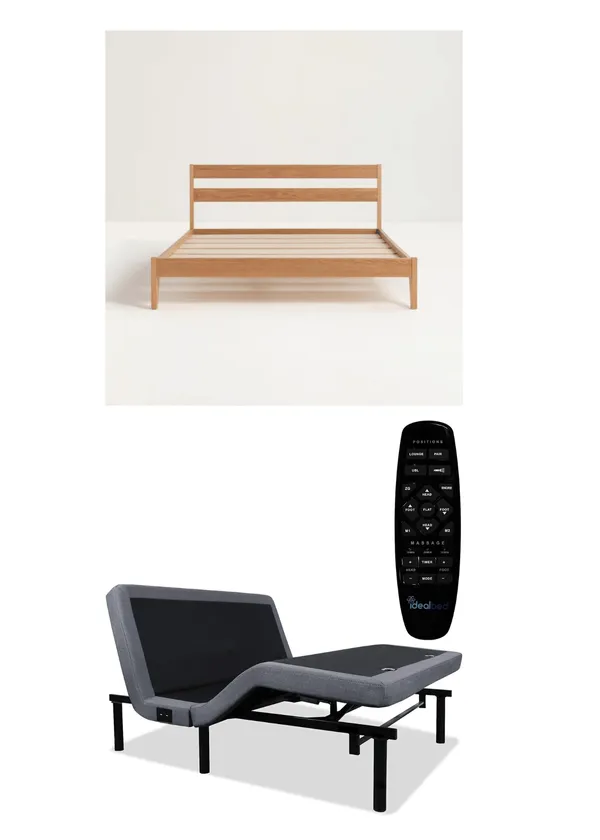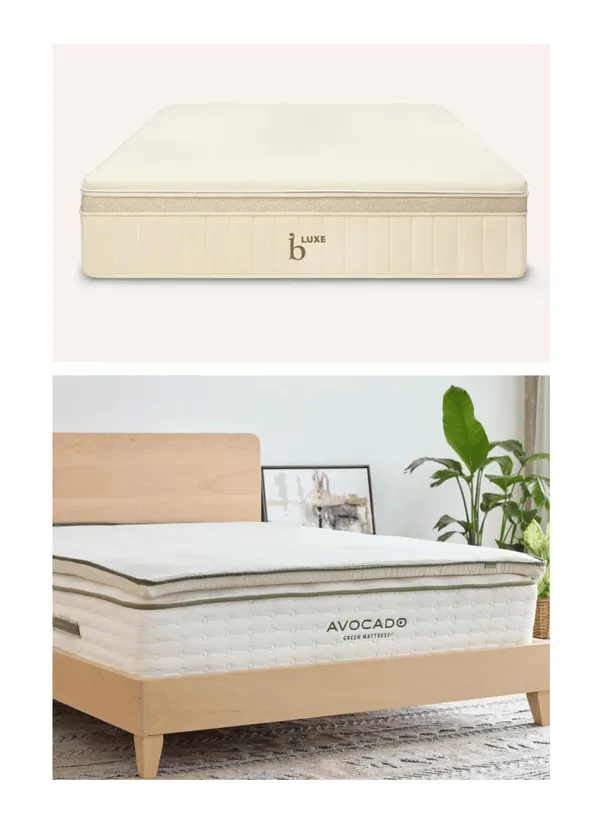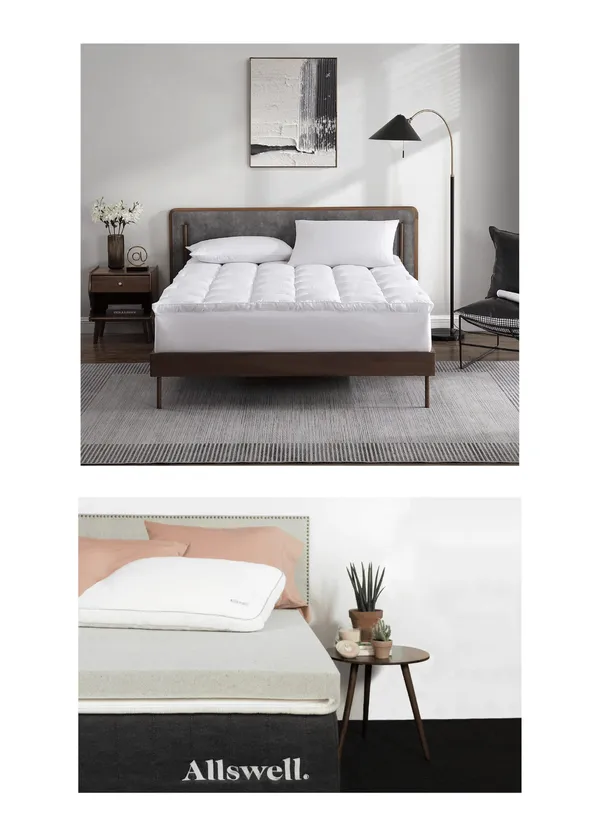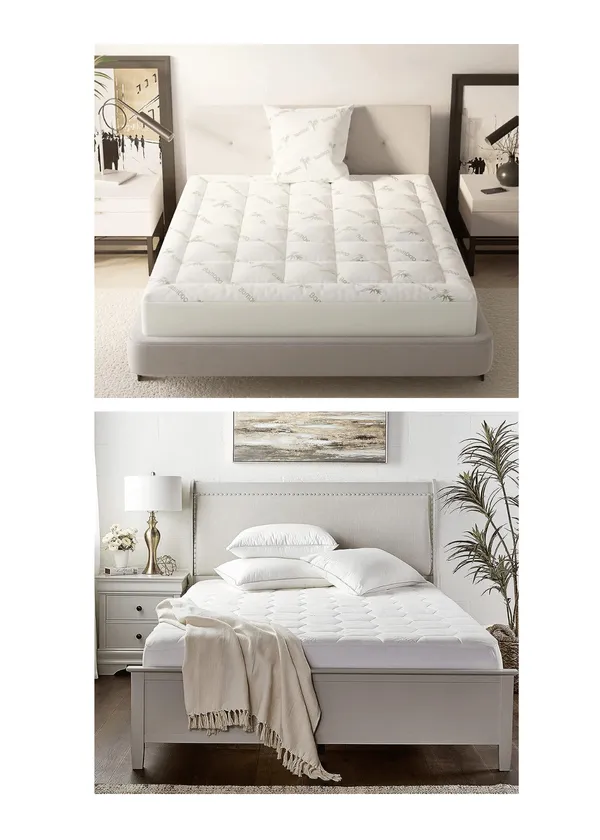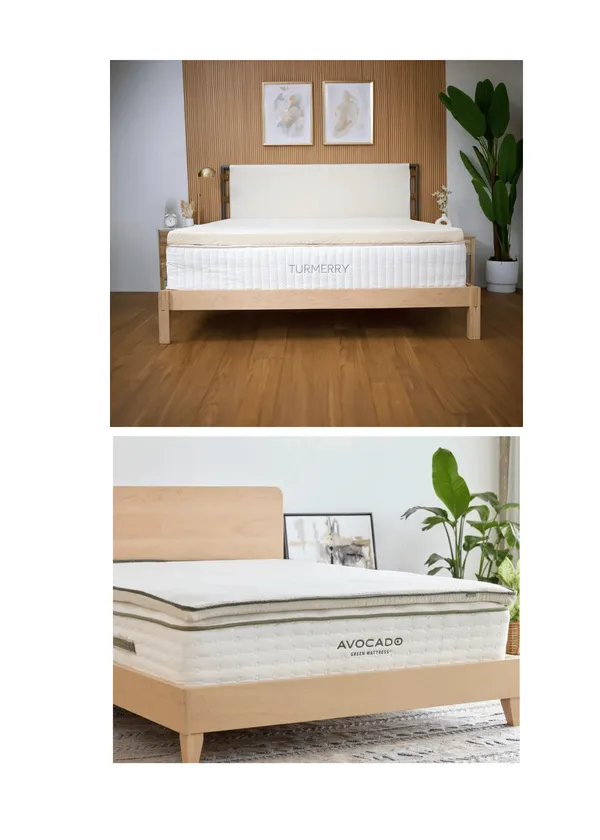(Last Update: 05/09/2024)
EXPERT KEY TAKEAWAYS:
- Choose the right mattress size for your room based on shape, furnishings, decor, and walking space.
- Understand standard mattress sizes to find one that fits your room’s layout and needs.
- Consider additional elements like shape, furniture placement, and walking area when designing a comfortable living or guest space.
Imagine the perfect room, whether a luxurious hotel suite or a cozy main bedroom at home. What’s the first thing that comes to mind?
Chances are, it’s the comfort and size of the bed. Choosing the right mattress size is crucial for maximizing comfort and functionality in any room, making it an essential aspect to consider when designing your ideal space.
This blog post will guide you through selecting the perfect mattress size for your room, considering various factors, such as room dimensions, furniture, and personal preferences.
Guidelines For Choosing the Right Mattress for Your Room Size

A luxury hotel room.
(Credit: Canva)
Selecting the right mattress size ensures maximum comfort and functionality, particularly when dealing with an average room size. Considers aspects like the length of your walls, the location of features like a sink or pantry, the room’s square footage, and your budget.
For example, the dimension of a guest room in a house or hotel may determine the range of suitable mattresses.
Prices can vary. Whether in Europe, America, Africa, or Asia, cleanliness, walking space, the room’s square footage, function, and the desire for comfort play a significant role in this decision.

An African-American baby sleeping on a comfortable mattress.
(Credit: Canva)
SMALL ROOMS
Small rooms require careful planning to ensure the mattress dimension doesn’t overwhelm the place, leaving enough place for essential furnishings and walking space.
A Twin or Twin XL mattress is the most suitable option for smaller rooms, providing adequate sleeping spots without overpowering the limited floor area. This will guarantee a comfortable and functional environment for you and your guest's satisfaction.
MEDIUM ROOMS
Medium-sized rooms, such as those in budget hotels, provide more flexibility when choosing a mattress size.
A queen mattress is usually the most appropriate option for these rooms, as it offers sufficient sleeping spots while leaving a place for amenities. However, full and king mattresses can also be accommodated in medium-sized hotel rooms for guests.
Large Rooms and Hotel Room Sizes
Large rooms, such as master suites or bedrooms, with a minimum area of 10 by 10 feet. An area with a dimension of 10 feet by 10 feet would be 100 square feet. It can comfortably accommodate larger mattress sizes.
These spacious rooms may also include a larger bathroom, making them ideal for families or luxurious hotel room sizes and suites.
However, it’s essential to maintain a balanced design and avoid overcrowding the area with oversized furnishings, tables, and decor, especially when considering hotel room sizes compared to the third-world average hotel room size.
Understanding Mattress Sizes

A happy couple checking a mattress in a furniture store.
(Credit: Canva)
Selecting the right mattress for your room size is a process that should account for the room's function and features. A hotel's guest room size can see the range of suitable mattresses. Aspects like walls, available places on one side, and pantry or bathroom location can influence your decision-making.
Mattresses may come in different sizes, and understanding the measurements of each type can help you choose the best fit for your room. From space-saving twin mattresses to luxurious king-sized beds, there’s a mattress size to suit every room.
By familiarizing yourself with the standard size measurements of each mattress, you can make an informed decision when selecting the perfect bed, considering aspects like room size, furnishings placement, bathroom, and overall room arrangement.
TWIN MATTRESSES
Mattresses come in different sizes, and understanding the measurements of each type can help you choose the best fit for your place. From space-saving twin mattresses to luxurious king-sized beds, there’s a mattress dimension to suit every room.
By familiarizing yourself with the standard size measurements of each mattress, you can make an informed decision when selecting the perfect bed, considering factors like room size and overall room format.
FULL MATTRESSES
Full mattresses, measuring approximately 54 x 75 inches, are suitable for single adults, teenagers, or guests. They provide more sleeping areas than twin mattresses.
When selecting a full mattress, it’s crucial to consider factors such as mattress type, firmness level, materials used, the room's dimension, location, and the number of spots available.
QUEEN MATTRESSES
Queen mattresses, measuring approximately 60 x 80 inches on one side, are popular for couples or guests who want more sleeping areas.
These mattresses offer more sleeping areas than full mattresses, making them an ideal option for those wanting additional room to move during the night. Standard hotel rooms typically feature a Queen mattress.

A Hotel room king-sized bed.
(Credit: Canva)
KING MATTRESSES
King mattresses provide ample area for couples or guests who prefer a larger sleeping area, measuring approximately 76 x 80 inches.
These spacious mattresses offer plenty of place for movement without disturbing a partner. Most hotel rooms also feature King-sized mattresses.
CALIFORNIA KING MATTRESSES
California king mattresses are longer and narrower than standard king-size mattresses, measuring approximately 72 x 84 inches, and are ideal for taller individuals or rooms with unique measurements.
These mattresses provide additional length compared to standard king-size mattresses, making them a great option for those requiring more leg place.
They are less commonly used in a hotel room than standard King or Queen mattresses.
Additional Considerations

A happy man on a comfortable mattress at home.
(Credit: Canva)
When choosing a mattress, it's crucial to account for room size, shape, and walking spot. For example, in a hotel or family home, the decor, including a table, bathroom, or wall bars, plays a role in determining the range of suitable mattresses.
It's optimal to consider these factors while in-store to make an informed decision about the room's comfort and aesthetics.
ROOM SHAPE
Room shape plays a significant role in deciding the appropriate mattress size for you or your guests. Traditional rectangular or square footage rooms often allow for more flexibility when choosing mattress sizes, ranging from twin to California king.
However, rooms with irregular shapes, niches, or multiple purposes might require a more strategic approach. Alcoves or angular corners could benefit from smaller mattress sizes, like twins or twin XL.
FURNISHINGS AND DECOR
Furniture and decor can impact the overall feel and functionality of the living room, so choosing a mattress size that complements the room’s design is important.
When selecting furnishings and decor, consider the standard size and placement, the type of flooring, and the amount of wall space available, ensuring the mattress size fits comfortably within the room’s setup.
WALKING SPACE
Walking space is pivotal in room configuration and can drastically influence comfort and functionality after placing your chosen mattress.
Consider areas needed for opening and closing drawers, doors, and wardrobes, as well as accessibility around the bed.
By carefully planning the setup of your place, you can create a comfortable and functional environment that allows for easy movement and access to essential amenities and functions, all while utilizing less space.

A very well-decorated bedroom.
(Credit: Canva)
Customizing Room Sizes for Personal Preferences
Customizing room sizes for personal preferences generally involves considering room design and mattress size to create a comfortable and functional area.
Considering these factors, you can design a place that reflects your style and maximizes the room’s appeal. Whether you’re designing a main bedroom at home or optimizing a premium hotel room size for guest satisfaction, customizing room common sizes can help you create a comfortable and functional spot.
How Room Size Affects Property Value
Room size can affect property value, with larger rooms generally being more desirable and valuable than smaller rooms.
However, it’s essential to balance room size with functionality and comfort to maximize the appeal of a whole house or smaller room. A well-designed room that offers ample area for movement and comfortable sleeping arrangements.
Summary
In conclusion, selecting the right mattress size is essential for creating a comfortable and functional space, whether it’s a hotel room or a master bedroom at home.
By considering factors such as room dimension, shape, furniture and decor, and walking space, you can design a room that reflects your preferences and maximizes its beauty.
With the right mattress size and a well-thought-out room layout, you can create an inviting and comfortable environment that enhances your family and daily living experience.
So, take the time to carefully decide your options and find the perfect mattress dimension for your unique spot, creating a room that truly feels like home.
Frequently Asked Questions
What is the standard size of a room?
The standard size of a typical master bedroom in the United States averages around 11 square feet by 12 feet, equaling approximately 132 square feet. However, these common sizes vary depending on the type of bedroom—master bedroom, secondary, or guest satisfaction—and the overall design and layout of the home.
How can I calculate my room size?
To determine your room's size, you need to measure the length and width of your room in feet. By multiplying these dimensions, you get the total area in square feet. If a bedroom measures 12 feet by 12 feet, the calculation would be 12 x 12, yielding 144 square feet. Thus, the room's area would be 144 square feet.
How big is a 12x16 bedroom?
A 12x16 bedroom spans a considerable 192 square feet, providing ample space for accommodating larger furnishings and offering more arrangement flexibility than standard-sized bedrooms.
What is the average hotel room size?
The average hotel room size varies greatly depending on the class and location of the hotel. However, a standard hotel room is typically around 330 to 400 square feet. This hotel room comfortably accommodates a full or queen bed, a seating area, and other amenities.
What are BTUs in AC?
BTU stands for British Thermal Unit, which is the unit of measurement used to gauge how much energy an air conditioner needs to remove heat from indoor air in one hour. The energy needed is equal to the amount required to raise the temperature of one pound of water by one degree Fahrenheit.
What are the recommended dimensions for a dining room to comfortably accommodate furniture and guests?
While the focus is often on minimum bedroom size to save space for dining rooms, the minimum size should ensure enough space for furniture and guests. Ideally, accommodating a table and chairs and allowing for easy movement around the room sets the standard for comfort and functionality in dining area dimensions.

